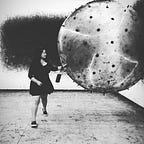A Cat Meme Is Now Worth A Thousand Underlying Words
Internet memes have become a source for news, ideas, humor, or a way to send out messages. From the adage, “a picture is worth a thousand words,” memes today can be held to the same regard. As memes are becoming the new unit of communication in various cultures, humor and images are used to symbolically mask underlying propaganda that are being circulated unconsciously as long as the consumer can be influenced.
Memes are more complex and grotesque than they seem.
Evolutionary biologist Richard Dawkins, in his 1976 book entitled The Selfish Gene, had coined the original term “meme” 40 years ago out of wordplay with imitation and gene. Yet memes did not take off in rapid fashion until given a digital medium.
Given an anonymous digital playground, creators are free to create ideas into memes of any kind as raw and unfiltered without any restrictions, expressing them into art in the form of pictures, videos or texts, which is no different than an oil painting or a piece of literature. As a result, memes get passed on from user to user into different networks, to be consumed and processed for content.
Alice Marwick and Rebecca Lewis, authors of Media Manipulation and Disinformation Online, discuss why memes are successful today — they rely heavily on our interpersonal ties of creating and sharing memes with each other instead of a news outlet creating them for us, such as the editorial cartoon.
Of course, there is always the dark side of the moon to memes. Light-hearted images with captions can become the ‘gateway drug’ for more extreme content or propaganda.
As an illustration, “hate” or “racism” as words alone do not generate a meaning unless given a medium for context. Consider the following meme:
Initially, the humor of the meme’s language is the amusement of cat stigma colors. Nevertheless, this meme is a prime example of how humor and a cat mask an underlying message unless we step back and look at the bigger picture.
Black cats carry the superstition as being “unlucky” if found crossing a person’s path in certain cultures, yet other cultures may argue it is lucky; luckiness of the cat’s coat color is subjective to cultural beliefs and its ideologies towards it. Instead of saying any other possible coat color, such as orange, brown, tabby, tuxedo or grey, the creator intentionally chose the word “white” to show the seemingly harmless cat coat color comparisons akin to light versus dark or morning versus evening, but it carries a secret cultural context that would demonstrate racist connotations.
Connotatively, the message is saying that unless one is white in color, either as a cat or human, it is the more superior pedigree over being black. If the description had no cat photo to accompany it, the text alone was not enough to infer what kind of comparison was being made: an object, an animal or a class of people. There are no known biological markers between actual cats that generate racism other than biological territoriality that is not subjective to coat color at all; rather, language’s power in memes creates a medium for racism to exist and be circulated.
Thus, Marwick and Lewis have found that there are five key techniques that media manipulators use, which are:
- Participatory culture
- Networks
- Memes
- Bots
- Strategic amplification and framing
Memes may seem like they originate from any creator, but it is not the result of that origin’s thinking alone. They might have created the end product, yet there are other subconscious factors not accounted for that goes into the overall creation process :
What kind of context is the creator working from + influences + their ideas and subject matter that they are exploring = shape how the end product is designed. As the real origin may be culture at large, the actual creator, or both.
It may be easy to perceive that a particular cat meme is only producing one kind of message, but another message can also be pulled out from the same meme by a different set of eyes.
As long as we are critically thinking about the memes we are consuming; they are going to be both humorous and grotesque, like two sides of a coin, depending on what we see. They are endless information units to generate meaning in a given community.
